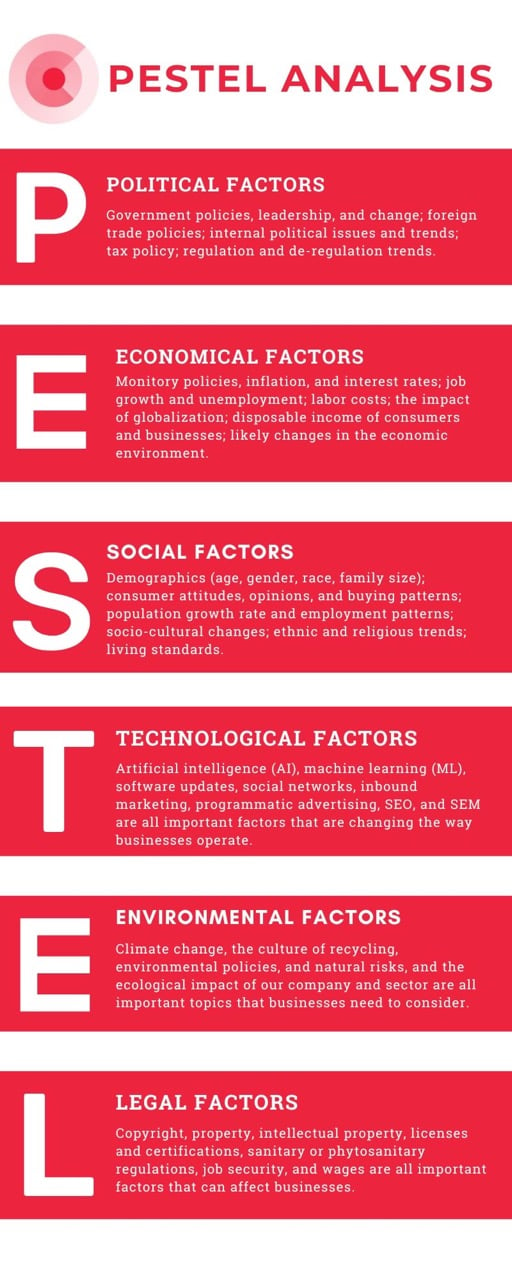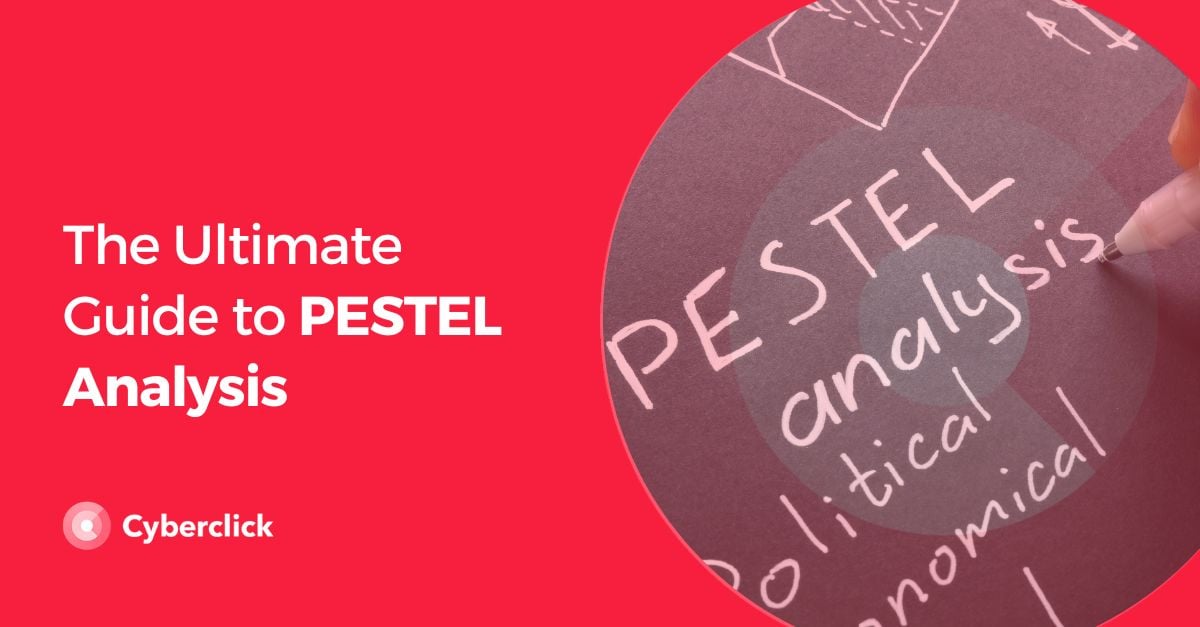Whether you are a budding entrepreneur or an established business owner, conducting a PESTEL analysis or an external analysis is essential to anticipate potential problems, adapt to new circumstances, and define your overall strategy.
In this article, we'll explore the PESTEL analysis that lays the groundwork for the well-known SWOT analysis. Incorporating both tools into your marketing strategy will enhance your company’s growth and productivity.
A Brief Introduction to Pestel Analysis
Companies widely employ PESTEL analysis to understand their industry on a macro level. It has become a vital resource for organizations, enabling them to anticipate potential scenarios and stay adaptable in the market.
A PESTEL analysis is a more comprehensive and powerful tool than a SWOT analysis. A SWOT analysis only considers internal and external factors, while a PESTEL analysis considers all six factors of the macro environment. This makes a PESTEL analysis a more valuable tool for understanding the forces that can affect a business's performance.
The term “PESTEL” originated in 1967, with Harvard professor Francis Aguilar's book "Scanning the Business Environment." However, it did not gain widespread popularity until 1986, when V.K. Narayanan and Liam Fahey published an essay on marketing titled "Macro-environmental Analysis in Strategic Management."
What Is Pestel and How Does It Work
The acronym PESTEL refers to the six most important external factors that can mark the future of a company:
- Political: This factor refers to governmental policies and regulations specific to the state and region directly influencing the company in question. The stability and predictability of the political environment can determine the level of risk when starting or operating a business in a particular area.
- Economic: Economic elements such as unemployment, GDP, the level of economic development, interest rates, the exchange rate, or accessibility to resources, among others, need to be considered. Inflation in particular, directly affects a company’s costs and revenues. The impact of economic factors can vary depending on the country a company is located in and the markets it serves.
- Sociocultural: Sociocultural factors encompass consumer behaviors, educational levels, beliefs, religion, or cultural aspects. In other words, elements that cause a brand to have more or less value in a certain area.
- Technological: Analyze the technological evolution of the sector you work in to better understand whether your company will become obsolete or has a long term future. This factor is fundamental in knowing how competitive your organization can be in the market.
- Ecological: All aspects related to the environment should be analyzed, such as waste management, use of natural resources, and the pollution of the business activity. For example, a business that produces plastics may need to reduce its environmental impact by using recycled materials or developing more sustainable production processes.
- Legal: All businesses must comply with legal regulations, which vary according to the territory they are located in. You need to consider the necessary licenses and aspects such as labor rights, intellectual property, health legislation, etc.
The acronym PESTEL can also be written simply as PEST or sometimes as PESTAL.
Now that you know what each letter of this acronym stands for, let's look at how to conduct a PESTEL analysis.
First, get a template for this type of analysis. There are many free ones on the Internet; however, you can also create your own from scratch.
This template (example below) is divided into six parts, each corresponding to one of the factors explained above.
Next, search for trends of each type that can influence your company, discuss them with the relevant team(s) and select the most relevant conclusions, which you then enter in each section.
But the PESTEL analysis does not end there! Once completed, you should think about the different solutions you can implement to resolve your identified problems.
Examples of PESTEL Analysis

Advantages and Disadvantages of Pestel Analysis
- Helps with decision-making: It facilitates decision-making since analyzing risks and detailing them in an orderly fashion helps the construction of effective strategies.
- Improve leadership skills: This analysis can help improve leadership skills by providing managers with a better understanding of the external environment.
- Allows for scenario planning: It allows companies to analyze trends and possible scenarios to anticipate and avoid setbacks. In other words, it enables companies to adapt much better to change.
- Can be time-consuming: The analysis can be a time-consuming process, as it requires businesses to gather all the relevant information.
- Can be subjective: The results can be subjective, as they depend on the interpretation of the information that is gathered.
- Requires regular updating: The external environment is constantly changing and so is PESTEL. This tool requires regular updating, as social trends often change, especially in countries that are in the process of rapid growth or change.

Responsable de la estrategia de contenidos y visibilidad en Cyberclick, con enfoque Allbound y especialización en posicionamiento SEO, GEO y automatización con IA. Gestión avanzada del CRM con HubSpot: base de datos, workflows, lead nurturing, scoring y reporting. Experiencia en marketing digital, comunicación corporativa y periodismo, uniendo estrategia, creatividad y tecnología para captar y convertir leads cualificados.
Responsible for content and brand visibility strategy at Cyberclick, with an Allbound approach and specialization in SEO, GEO (Generative Engine Optimization), and AI-powered automation. Advanced HubSpot CRM management: database segmentation, workflows, lead nurturing, scoring, and reporting. Background in digital marketing, corporate communications, and journalism—combining strategy, creativity, and technology to attract and convert qualified leads.






Leave your comment and join the conversation